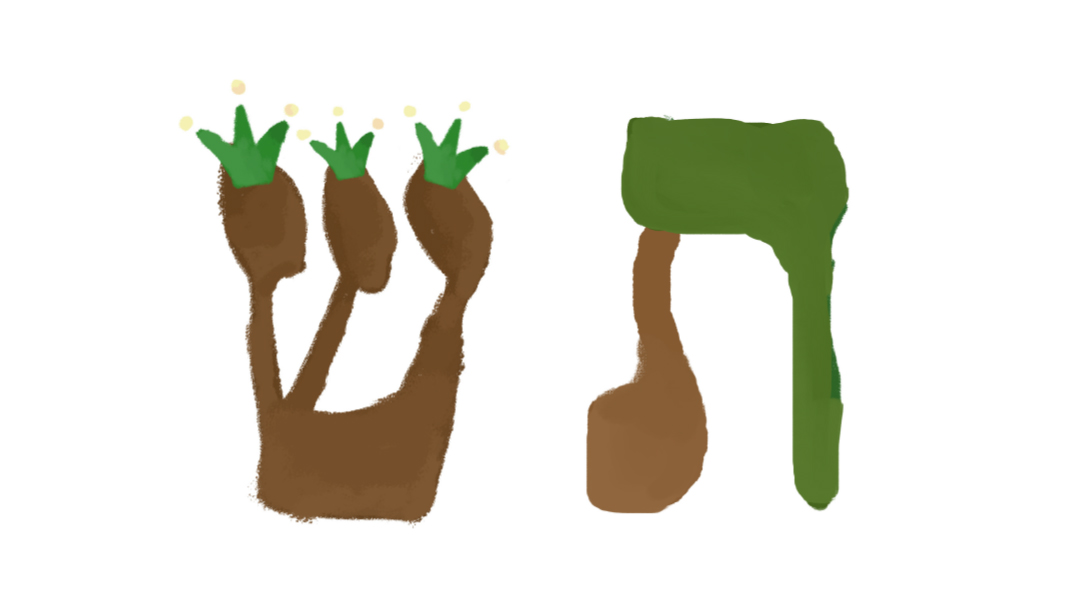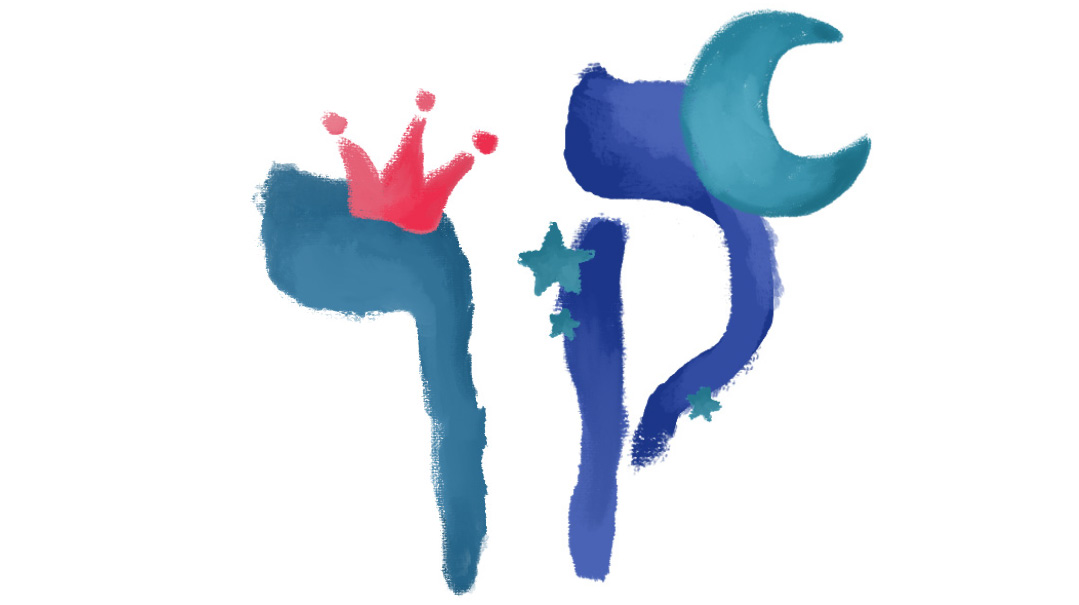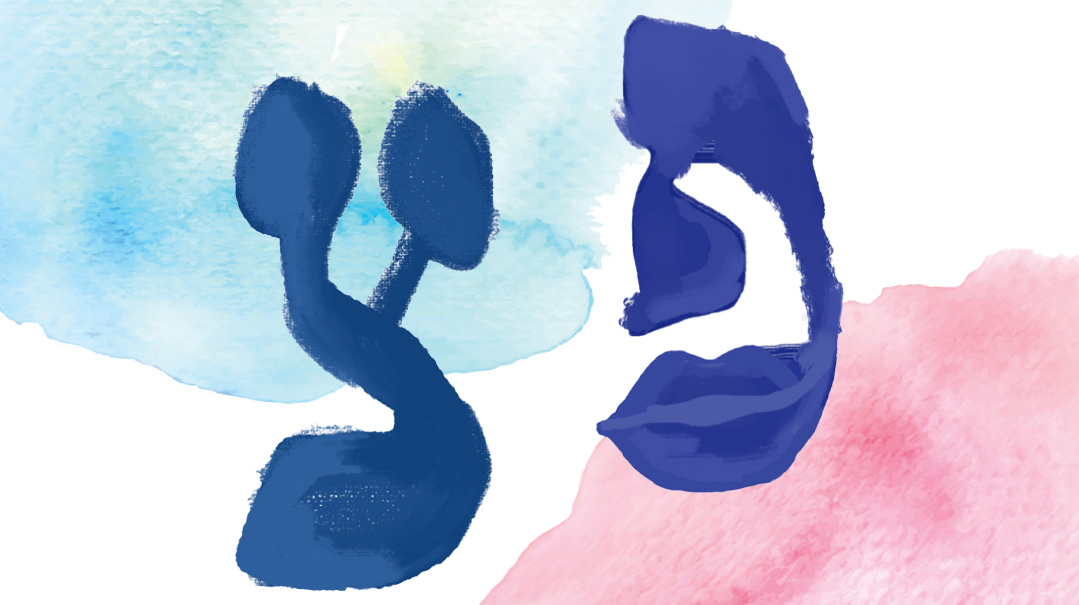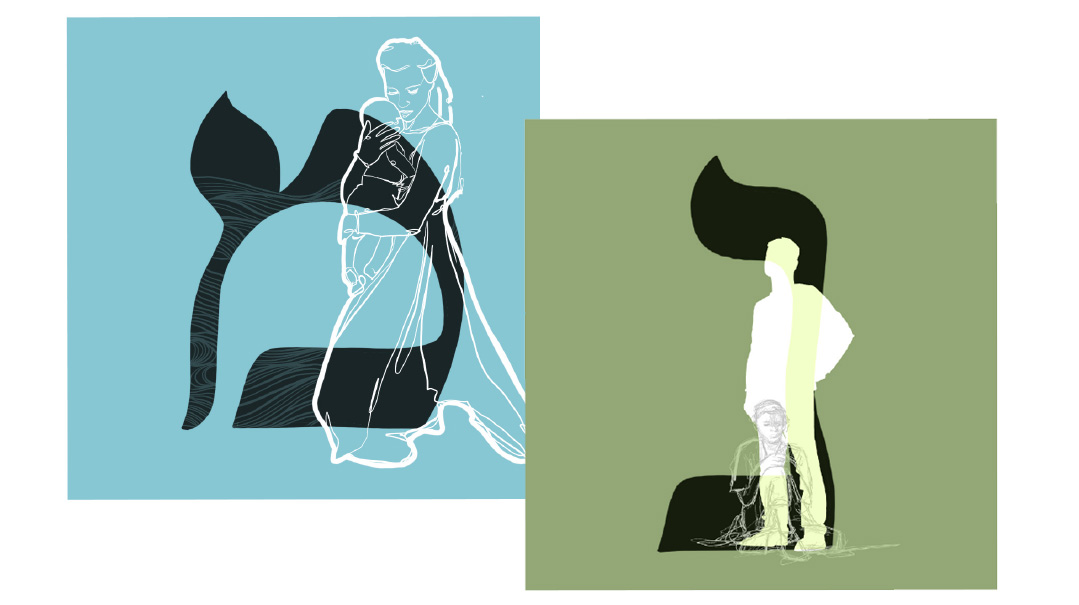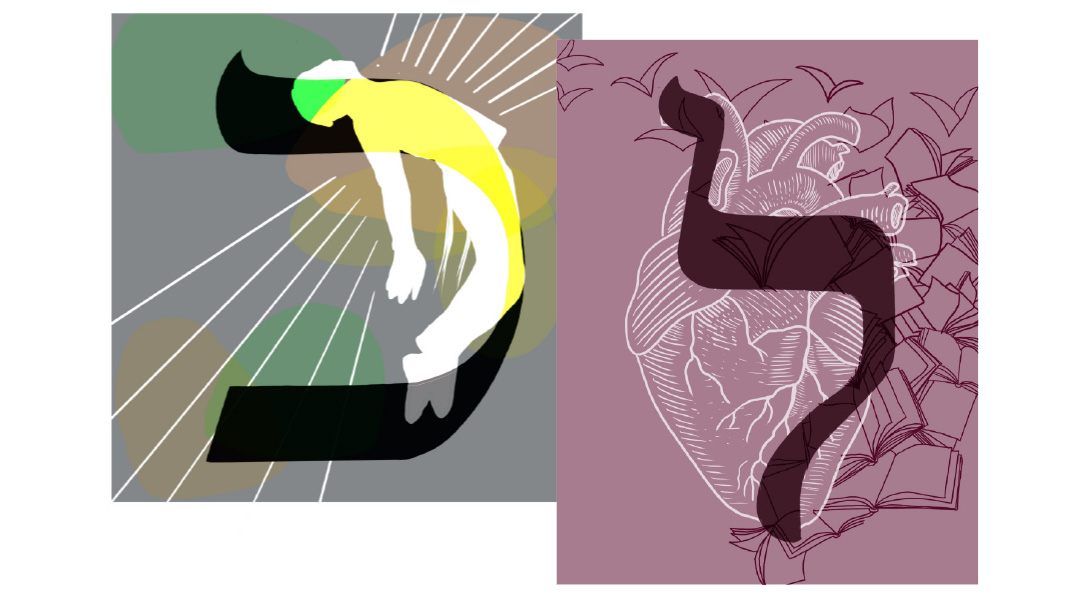Samech-Ayin
| June 20, 2023Our innate feminine compassion helps us see things positively
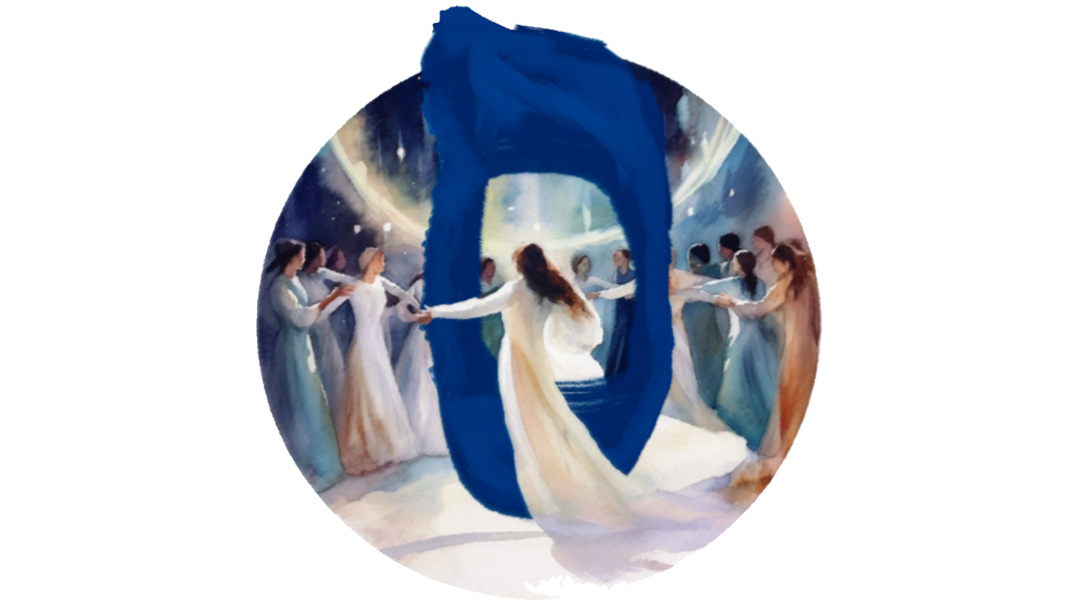
Samech
Name: Means support
Number: 60
Shape: Round with no gaps
Middah: Encouragement
Hashem is the “Someich Noflim, Supporter of the Fallen.” Just as the exterior of the samech is a circle, there is no beginning or end to Hashem and His care for us. The middle of the samech is an enclosed area, showing that we’re supported on all sides by His messengers and His kindness.
Yes, we may find ourselves in challenging situations, struggling to keep our heads above water… and yet, it’s specifically in those moments that Hashem sends us encouraging words from a friend, an unexpected gift, a smile to brighten our day.
Our job is to emulate Hashem by using His gifts to encourage, protect, and uplift others. In doing so we help them feel surrounded by support — and like the enclosing line of the samech, we give structure and meaning to whatever it is they’re going through.
Sixty, the gematria of samech, can allude to the Torah shebe’al peh — the 60 masechtos in the Gemara that “enclose” the center, the Torah shebichsav. Without these instructions and halachos, the written Torah would be impossible to apply practically; the Oral Law is what actually enables us to properly uphold the Torah’s principles.
In the kitchen, we may encounter the halachos of “batel beshishim” — a small amount of dairy liquid drops into a meat food, but it’s discounted if there is 60 times as much fleishig food as milchig. The fact that there is a measure of 60 actually upholds the nature of the original food and pot.
As the 15th letter of the alef-beis, samech’s message of support and encouragement goes even further. The Kohanim whose job is to be the conduit of Hashem’s support into the world recite Bircas Kohanim, which has 60 letters — and 15 words! Each month, as the moon goes through its cycle, it reaches its pinnacle of wholeness on the 15th day. When we act as a samech, a support to others, we help them feel whole.
Tu B’Av, the 15th of Av, has become a day of shidduchim — when two people meet to support and complete and fill in the gaps for each other. The kallah encircles her chassan under the chuppah as a statement of her protection of him, and he gives her a circular ring as a testament to his unwavering support of her. We celebrate with the couple by dancing in a circle around them, proclaiming that we’re here to support them in building their home together. For an entire week of sheva brachos we circle back to the day of the wedding to again express this idea that we will help them feel stable and whole.
When Chava was created, the Torah uses the word “vayisgor” (Bereishis 2:21) to describe how Hashem closed Adam’s skin at the site from where He took a rib to form Chava. The samech in this word is enlarged — for women have an extra ability to make others feel whole with their natural compassion and warmth. Whether by inviting an outsider to join the conversation at a social event, offering a compliment to make someone less self-conscious, or giving someone a needed hug (also a circle!) — women who pay attention to the scene can use this power in a beautiful way.
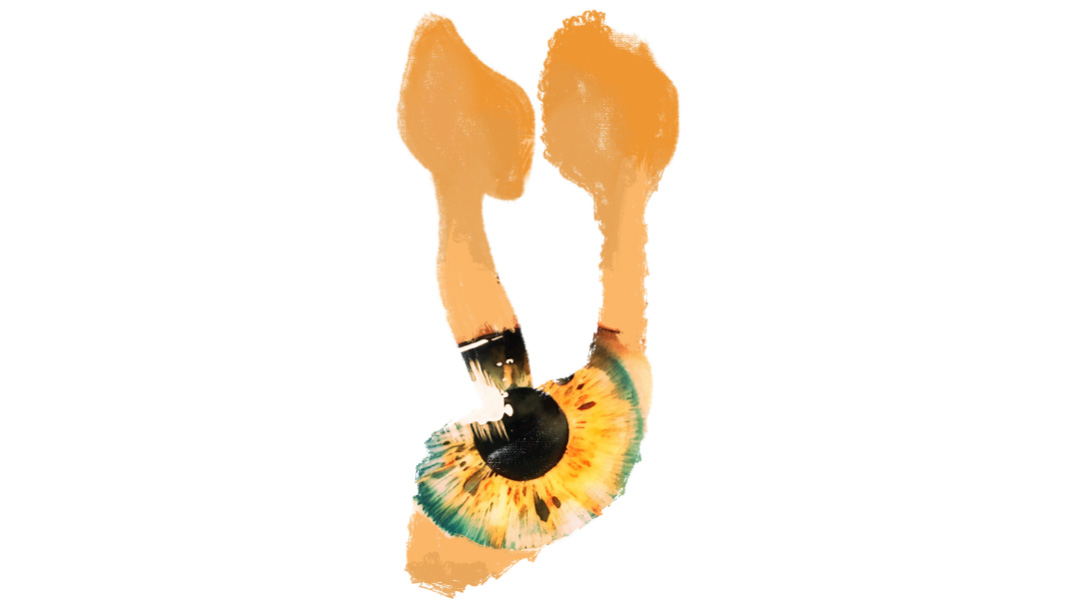
Ayin
Name: Means eye
Number: 70
Shape: Made of a zayin and yud extending from a base
Middah: Perception
The Gemara (Yevamos 65b) tells us, “Eino domeh shemiyah lire’iyah, seeing is not comparable to hearing. While sound gives us much information, sight is the main sense we utilize in navigating our surroundings. In the pasuk of Shema Yisrael (Devarim 6:4), the ayin of the word Shema is enlarged. It signifies that we can’t only “hear” the message — we must utilize our ayin also to actually see Hashem in all aspects of our lives.
Ayin is also the root of the word maayan (spring of water). A spring reveals the hidden; it transports water from an underground location to an expansive area — to a place where it becomes usable for people. Our whole world is brought into focus through the tiny opening in our eye that expands into the optic nerve and then to the brain — leaving us with vast amounts of information that we can actually use. And it’s our eyes that provide a small but often telling window to a much deeper reality going on inside of us, especially when they emit tears.
The ayin is made of a thick base, with a zayin emerging from the center and a yud extending from the right side. Yud and zayin add up to 17, the gematria of the word tov. The message: Use your eye to see good! “Rabban Yochanan ben Zakkai said to his students, ‘Go out and see which is a good path for a person to attach himself to.’ Rabi Eliezer said, ‘Ayin tovah, a good eye’ ” (Avos 2:9). When you look into someone else’s pupil, you see — yourself! This is a constant reminder: Before you respond out of negativity, ask yourself how you would want to be treated and spoken to.
The first appearance of human sight in the Torah is in reference to Chava, “When the woman saw that the tree was good for eating and a delight to the eyes…” (Bereishis 3:6). After the cheit, the Torah tells us: “Then the eyes of both of them were opened, and they saw they were naked…” (3:7).
Chava’s sight appears to be a vehicle of temptation. But further on (since we can assume that Adam and Chava had already noticed their nakedness before the cheit), we see that sight is indicative of a deeper perception. They understood. When used superficially, sight will drive us after immediate pleasures. But then we must ask: What is the deeper way of seeing this situation? How will I feel after I pursue this? This is the power of not just sight — but insight and understanding.
The 70 members of the Sanhedrin are referred to as the “Einei haeidah — the eyes of the nation,” because they have the ability to view situations with a deeper level of perception.
“Nichnas yayin yatzah sod — in goes wine, out comes a secret” (Eiruvin 65a). Yayin and sod each have the gematria 70, the same gematria as the letter ayin, signifying the release of something valuable and internal to a larger expanded reality.
“As the numerical value of yayin is 70, so there are 70 modes of expounding the Torah — shivim panim laTorah” (Bamidbar Rabbah, 13:15). A grape seems limited in its potential, and yet a hidden power emerges when it’s used to produce wine. While Torah originates in a seemingly “contained” source of written books, it’s in truth an endless sea of expansion. We have so much inside us that can be revealed — the key here is in making sure we’ve worked on ourselves to the point that when the inner secrets are expressed, they’re congruent with the outer image we’ve projected. We want to be beautiful both inside and out.
The Connection between Samech and Ayin
When we look at situations through samech — with an all-encompassing view, taking in the complete picture — we’re then able to maintain an ayin tovah, a positive perspective.
(Originally featured in Family First, Issue 848)
Oops! We could not locate your form.

